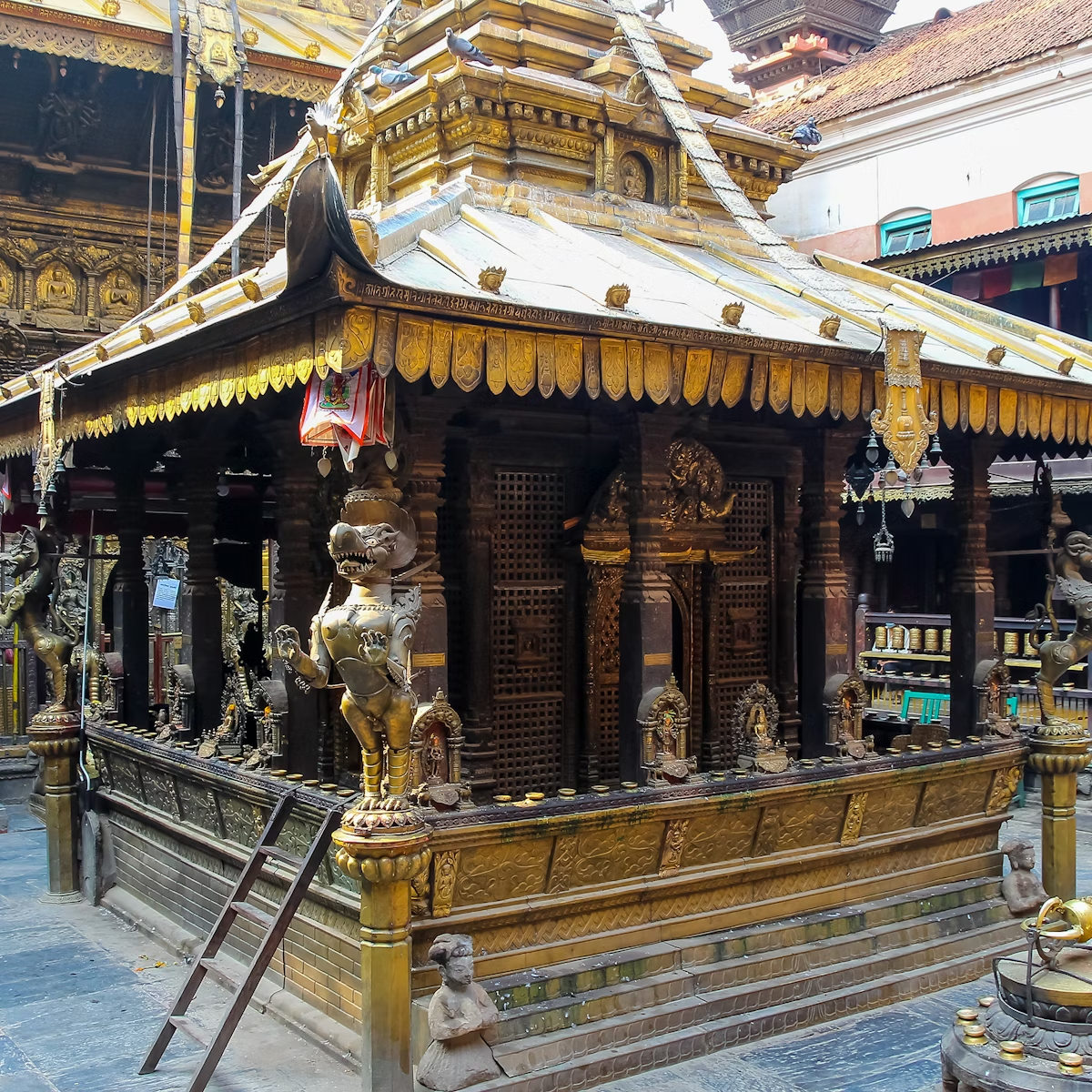The path drops out of the forest to the large, courtyard-style Guhyeshwari Temple, built by King Pratap Malla in 1653 and dedicated to Parvati (the wife of Shiva) in her terrible manifestation as Kali. Entry is banned to non-Hindus, but from the path you can see the four huge gilded snakes that support the central finial, as well as the Bodhnath Stupa in the distance.
The temple’s curious name comes from the Nepali words guhya (vagina) and ishwari (goddess) – literally, it’s the temple of the goddess’ vagina. According to legend, the father of Parvati insulted Shiva and the goddess became so incensed that she burst into flames, providing the inspiration for the practice of sati, where widows were burned alive on the funeral pyres of their husbands. The grieving Shiva wandered the earth with the disintegrating corpse of Parvati and her genitals fell at Guhyeshwari. Indian Hindus make the same claim for the Kamakhya Temple at Guwahati in Assam.
The riverbank in front of the temple is lined with Shiva shrines and bell-roofed octagonal pavilions for ritual bathing.







